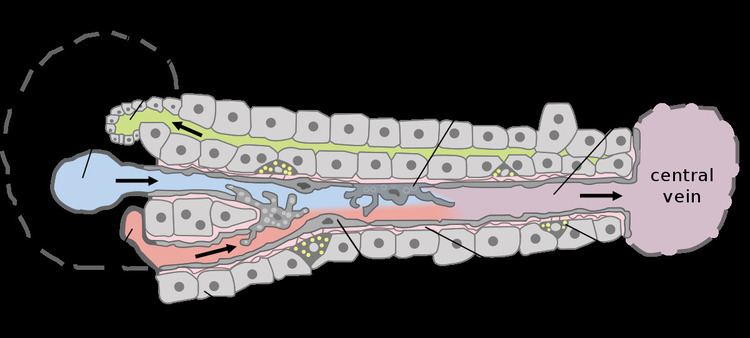Latin Ductulus bilifer | ||
 | ||
The Canals of Hering, or intrahepatic bile ductules, are part of the outflow system of exocrine bile product from the liver.
Contents
Structure
They are found between the bile canaliculi and interlobular bile ducts near the outer edge of a classic liver lobule.
Histology
Histologically, the cells of the ductule are described as simple cuboidal epithelium, lined partially by cholangiocytes and hepatocytes. They may not be readily visible but can be differentially stained by cytokeratins CK19 and CK7.
Clinical relevance
The Canals of Hering are destroyed early in primary biliary cirrhosis and may be primary sites of scarring in methotrexate toxicity. Research have indicated the presence of intraorgan stem cells of the liver that can proliferate in disease states, so-called oval cells.
History
They are named for Ewald Hering.
